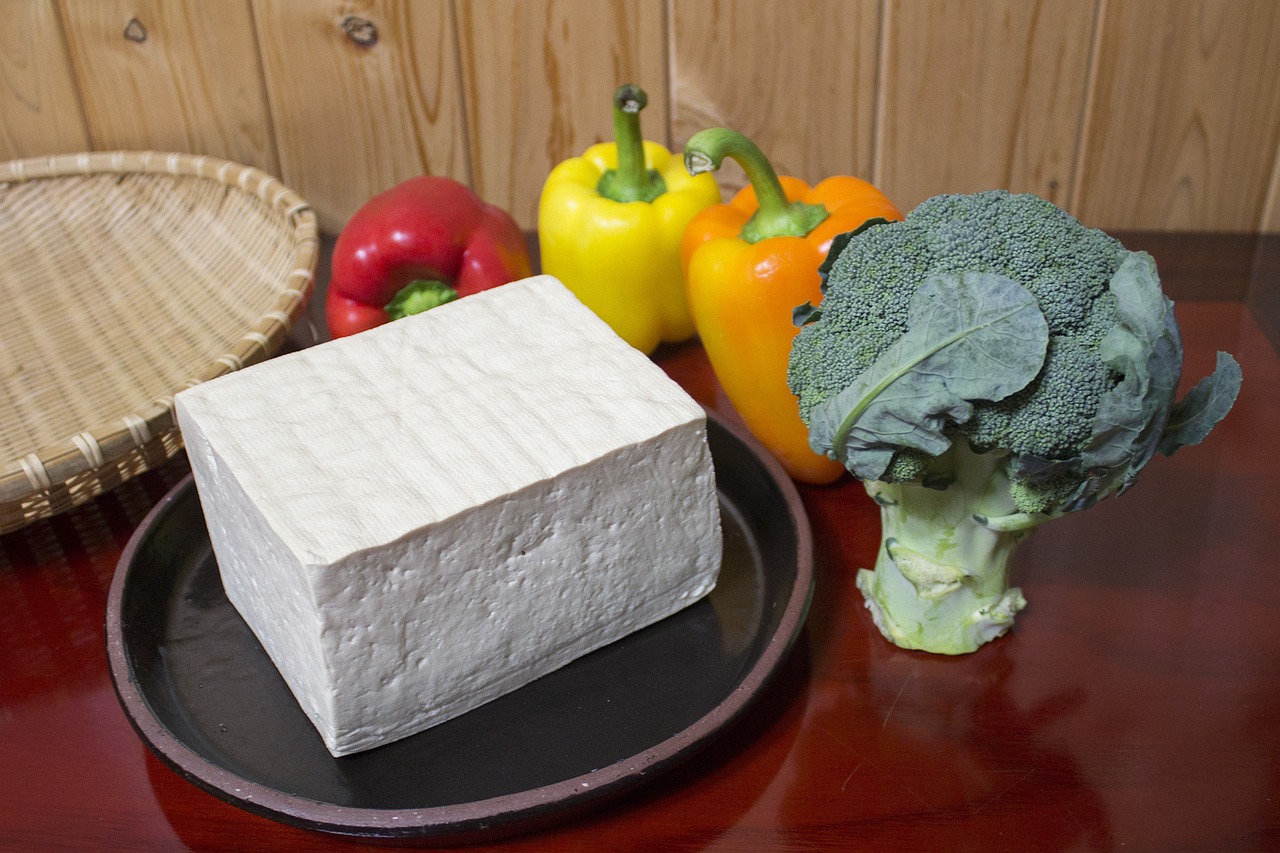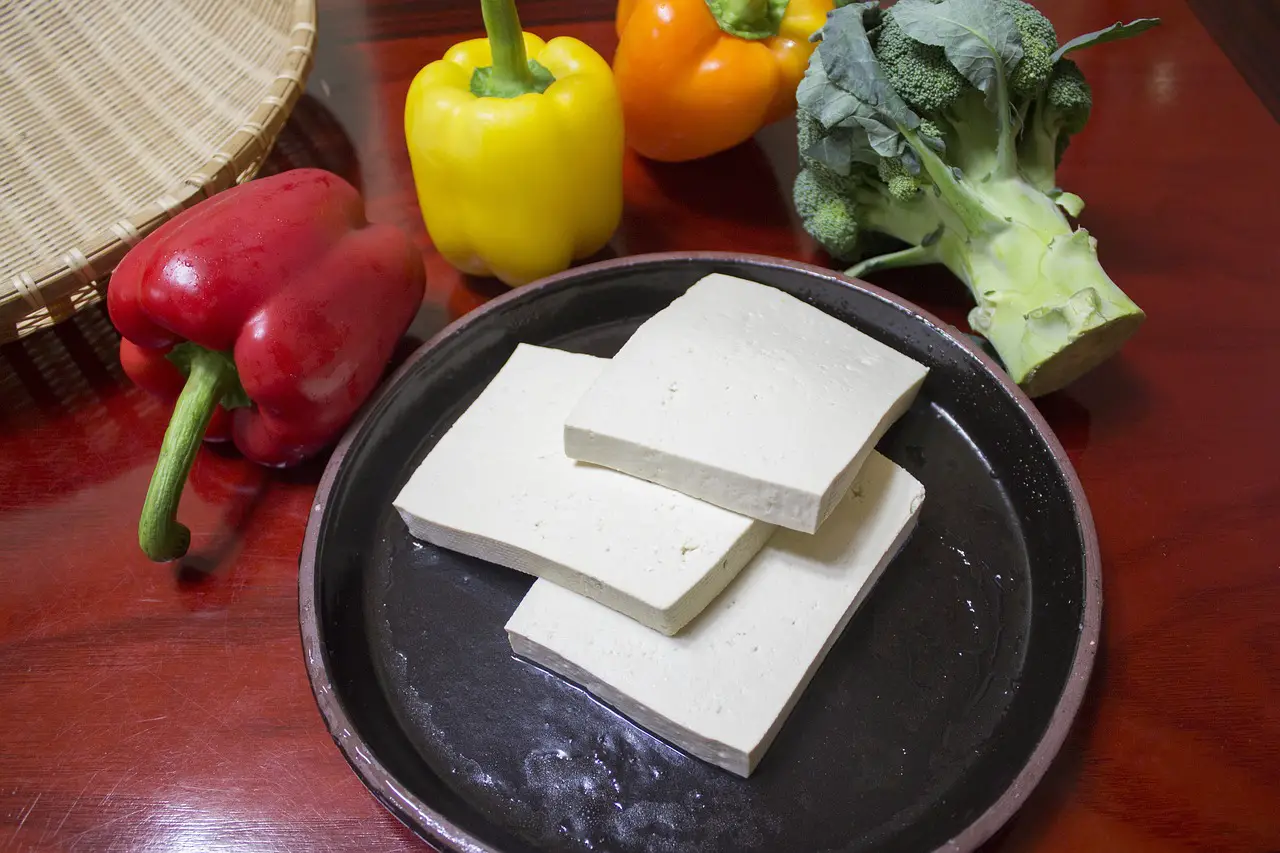Tofu has a lot of water in it. When frozen, this water expands and leaves small holes in the tofu’s interior. These holes make it easier for tofu to absorb flavorful sauces. Frozen tofu can be stored in an airtight container for up to three months. It’s best to use firm tofu when you freeze it since it keeps its shape well.
Tofu is a good meat substitute. However, it can’t absorb the flavors of marinades the way it does when it’s fresh. So, when you’re ready to serve tofu, thaw the tofu. After thawing, you can store tofu at room temperature for up to a month. The shelf life of tofu depends on the initial microbial load. When frozen, tofu changes its texture and chewiness dramatically. This is because of the expansion of the water in the tofu. The tofu’s pores are also enlarged. This helps it to absorb sauces and marinades better.

What is Tofu?
Bean curd, usually referred to as tofu, is a dish manufactured from soybeans. It is a common ingredient in many Asian dishes, especially those from China and Japan. To make tofu, soybeans are ground and combined with water to create a slurry. The remaining curd is then squeezed into blocks after the slurry has been pressed to remove the liquid. Tofu can be eaten in various dishes, such as soups, salads, sandwiches, stir-fries, and a meat substitute.
Tofu has a lot of different important amino acids and is a rich source of protein. It is a wonderful source of calcium and iron and is low in calories and fat. Additionally high in antioxidants, tofu is well known for its anti-inflammatory qualities. Tofu is also a great plant-based protein source and is acceptable in vegetarian and vegan diets.
How to Freeze Tofu?
Tofu may be properly frozen by following these steps:
- Start by choosing a firm, fresh tofu. After draining the tofu, squeeze out any remaining water.
- Tofu should be diced or cut into desired shapes, such as cubes or slabs.
- On a baking sheet covered with parchment paper, arrange the tofu pieces. Make sure the components are separated from one another.
- Freeze the tofu on the baking sheet for at least two hours or until it is completely frozen.
- The tofu can be transferred to a freezer-safe bag or container once frozen.
- After writing the date and the type of tofu on the bag or container, put it in the freezer.
- Take the tofu out of the freezer and let it defrost in the fridge until you’re ready to use it. In the freezer, frozen tofu can remain in good condition for around six months. Tofu frozen can be thawed and used in soups, stir-fries, and other meals.
It should be noted that freezing tofu will cause it to become firmer and more spongy. This texture could be ideal for some meals but not for others.
How to Defrost the Frozen Tofu?
Here are some techniques for defrosting frozen tofu:
- The safest and most advised technique is to defrost food in the refrigerator. Just put the frozen tofu in the fridge and let it sit there overnight to thaw. With this technique, the tofu can slowly defrost, preserving its texture and flavor.
- Put the frozen tofu in a sealable plastic bag and thaw it in cold water by placing the bag in a bowl of water. Until the tofu is completely defrosted, change the water every 30 minutes. Although this procedure is quicker than thawing in the refrigerator, it demands more care.
- Thawing in the microwave: Put the frozen tofu in a dish the microwave can handle and thaw it on the defrost setting. The timing of this procedure can be hard, but it is quicker than refrigerator thawing.
Choose the defrosted tofu immediately or keep it in the fridge for no longer than a day, whichever method you choose. After thawing, frozen tofu shouldn’t be refrozen.
Which Methods can be Used to Store Tofu?
The steps for storing tofu correctly are as follows:
- Start by choosing a firm, fresh tofu. After draining the tofu, squeeze out any remaining water.
- Tofu that is packaged in water needs to be kept in the fridge. To prevent the tofu from drying out, keep it in the container it was packaged in and make sure it is firmly sealed. Transfer the tofu to an airtight container and cover it with water if the package has been opened.
- If the packaging has been opened, the tofu can also be kept in the refrigerator in an airtight container with water on top. To keep the tofu fresh, change the water every day.
- For up to a week, tofu can be kept in the refrigerator. It is preferable to freeze it for extended storage if you don’t use it within that time.
- You may freeze tofu to keep it fresher for longer. Tofu can be frozen to modify its consistency and make it more spongy, but it can also be thawed and used in many different recipes.
It’s vital to remember that tofu needs to be kept away from raw meats and other potential sources of contamination and in the coldest part of the refrigerator.
What are the Different Methods of Cooking Tofu?
Tofu can be prepared in a variety of ways, including:
- Pan-frying: This technique is excellent for giving the tofu a crunchy texture. To pan-fry the tofu, cut it into the proper size, cover it with flour or cornflour, then put a little oil in a skillet over medium-high heat. When the tofu has turned golden brown, add it and cook it for two to three minutes on each side.
- Stir-frying is a terrific way to incorporate tofu into a dish that includes meat and veggies. To prepare tofu for stir-frying, cut it into the desired size, cover it with flour or cornflour, and then heat a little oil in a wok or skillet over medium-high heat. When the tofu has turned golden brown, add it and cook it for two to three minutes on each side. After that, add your preferred vegetables and simmer for a few minutes.
- Grilling: This technique is excellent for giving the tofu a smokey flavor. Slice the tofu into the required size before marinating it with your preferred marinade before grilling. About 3 to 4 minutes should be spent grilling the tofu on each side or until it has grill marks and is thoroughly heated.
- Baking: This technique is excellent for giving the tofu a crispy texture. To prepare for baking, cut the tofu into the required size, dust it with flour or cornflour, and lay it on a baking sheet covered with parchment paper. Bake for 20 to 25 minutes at 375 degrees Fahrenheit or until golden.
- Boiling: This technique works well to give the tofu a softer texture. To boil, cut the tofu into the necessary size, then place it in a pot of water that is at a rolling boil.
- A crunchy texture can be added to the tofu using the deep-frying technique. To deep fry, cut the tofu into the required size, dust it with cornflour or flour, and fry for a couple of minutes in heated oil until golden brown.
There are many additional ways to cook tofu, depending on your taste preferences and the recipe you’re following. These are just a few.
How to Identify Tofu is Spoiled?
- A smooth, uniform texture is what you should look for in fresh tofu. The tofu might have gone bad if you see any discoloration, such as brown or grey spots, or if it feels slimy. The following are some indicators that tofu may be bad:
- Fresh tofu ought to have a pleasant, nutty aroma. Strong, sour, or rotten smells indicate that the tofu may be ruined.
- Taste: Tofu should be thrown away if it has a sour, rotten, or odd flavor.
- Date of expiration: Be sure to look at the package’s expiration date; if the tofu is past the date, it should be thrown out.
It’s crucial to remember that spoiled tofu should not be eaten because it can make you sick. Always err on the side of caution, and it’s better to toss the tofu if you think it’s gone bad.
What can be Ill Effects on Health After Consuming Spoiled Tofu?
Food poisoning, which can result from eating contaminated tofu, can produce several symptoms, including:
- Vomiting and nausea might result from eating spoiled tofu, which can upset your stomach.
- Consuming rotten tofu might result in diarrhea, which is characterized by a lot of loose stools.
- Consuming rotten tofu can result in abdominal cramps and agony, which are often brought on by an aggravated or inflamed stomach or intestines.
- Dehydration is a condition that can produce dry mouth, thirst, and lightheadedness. S brings symptoms like nausea, vomiting, and diarrhea bring it on.
- A fever is a symptom of the bodyline an illness, and eating rotten tofu can cause one.
- Fatigue: Consuming rotten tofu might make you feel, which is indicated by a lack of enthusiasm and drive.
Headaches: Consuming rotten tofu might result in headaches, which can be brought on by bodily illness or inflammation.
It’s important to remember that not everyone will suffer the same symptoms and that their intensity can vary. Food poisoning can, in extreme situations, need hospitalization. Seek quick medical assistance if you have severe symptoms or suspect food poisoning.
Isoflavones are the primary source of phytoestrogens. Isoflavones can be found in soya (soybeans)-based foods and beverages like tofu. Equol, a bacterial metabolite and the only daidzein metabolite with hormonal activity, is a reliable indicator of the severity of menopause symptoms. This study had a pre- and post-design and was experimental. This study aimed certain the impact of a consistent tofu diet on menopause symptoms and excreted human urine equol levels. Women who were wrimenopausewere (n = 25) were interviewed using a questionnaire that followed the menopausal rating scale (MRS). Utilizing high-performance liquid chromatography, urine samples were examined (HPLC).
Conclusion
You can freeze tofu in its entirety or in slices. If you freeze it in it entirely can save it for up to a year. However, tofu should be cut into cubes before freezing. These cubes will help prevent freezer burn.
Tofu can be frozen for at least a day or overnight if you’re in a hurry. If you choose to freeze it for the night, you can let the tofu sit out for about 15 minutes to allow it to thaw out. To get the most out of freezing tofu, you must have a few important factors in mind. This includes keeping the tofu in a water-soaked plastic tub so t doesn’t dry out. Also, make sure the container is sealed well. The lid should be tight enough to keep out air but not so tight tit keeps out moisture.

